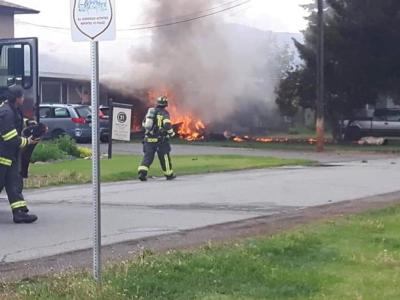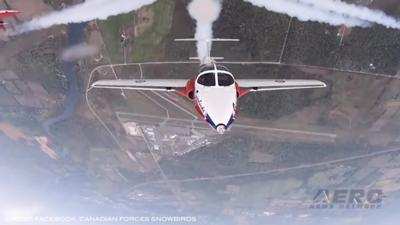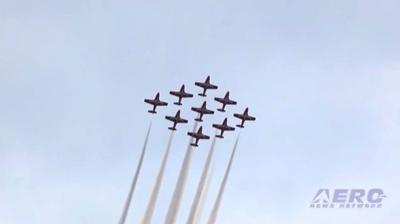Flight Safety Investigation Report Completed for Kamloops Snowbirds Accident
The Royal Canadian Air Force’s Directorate of Flight Safety, as the Airworthiness Investigative Authority for the Canadian Armed Forces, has concluded its investigation into an accident involving a CT-114 Tutor aircraft of 431 (Air Demonstration) Squadron on May 17, 2020 in the vicinity of Kamloops, British Columbia that claimed the life of Captain Jenn Casey and injured Captain Richard MacDougall.

The complete findings of the investigation and recommended preventative measures are publicly accessible in the CT114161 Flight Safety Investigation Report.
The investigation found that ingestion of a single, small bird into the engine of the aircraft ‘Snowbird 11’ following take-off resulted in a compressor stall and a loss of thrust. Upon loss of power, the pilot initiated a climb straight ahead and then a turn back towards the airport. During this manoeuver, the aircraft entered into an aerodynamic stall and the pilot gave the order to abandon the aircraft.
The pilot and passenger ejected from the aircraft at low altitude and in conditions that were outside safe ejection seat operation parameters. Neither the pilot nor the passenger had the requisite time for their parachutes to function as designed.
Recommendations in the report identified the need to conduct additional training for CT-114 aircrew to better prepare them for an engine failure after take-off in a low-level environment, clarify the command to ‘eject’, publish a directive to clarify how aircrew should prioritize an ejection-scenario near or over a populated area, and research potential options to stabilize the ejection seat from any tendency to pitch, roll, or yaw.
“Snowbird 11’s power loss could not have come at a worse time – low altitude, low airspeed, proximity to another aircraft, and in the vicinity of a built-up area. This tragic accident reinforces the importance of continuous, situation-specific training to minimize reaction time in an emergency and the importance of a timely decision to eject,” explained Colonel John Alexander, Director of Flight Safety, Royal Canadian Air Force

“The Royal Canadian Air Force prides itself on operational flight safety; however, we recognize the inherent risk with military flying, despite the tireless work of our team of professionals to safely operate and maintain our aircraft. In emergency situations, pilots must make split-second decisions after quickly processing a lot of information, while at the same time dealing with high levels of stress, g-forces, and other challenging environmental factors in the cockpit.
We are dedicated to learning from this accident and welcome the flight safety recommendations to minimize the chance of a repeat occurrence.
I wish to thank the people of Kamloops, the members of the Tk’emlúps te Secwépemc First Nation, Kúkpi7 First Nation, Skeetchestn First Nation, and all supporters in Canada and abroad for their outpouring of support to 431 (Air Demonstration) Squadron during this very difficult time,” reported Brigadier-General Denis O’Reilly, Commander 2 Canadian Air Division, Royal Canadian Air Force



 Airborne-Flight Training 05.09.24: ERAU at AIAA, LIFT Diamond Buy, Epic A&P
Airborne-Flight Training 05.09.24: ERAU at AIAA, LIFT Diamond Buy, Epic A&P ANN's Daily Aero-Term (05.07.24): Hazardous Weather Information
ANN's Daily Aero-Term (05.07.24): Hazardous Weather Information Aero-News: Quote of the Day (05.07.24)
Aero-News: Quote of the Day (05.07.24) NTSB Final Report: Cessna 150
NTSB Final Report: Cessna 150 Aero-News: Quote of the Day (05.08.24)
Aero-News: Quote of the Day (05.08.24)







